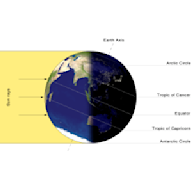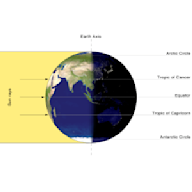Search results
The June solstice is the longest day of the year in the Northern Hemisphere and the shortest day in the Southern Hemisphere. Learn about the history, significance and timing of this astronomical event, as well as the solar year based on it.
June solstice in 2025. The solstice arrives at 2:42 UTC on June 21, 2025. When is it? A solstice isn’t a whole day. Instead, it’s the moment when the sun is farthest north in our sky.
Learn why the summer solstice is the longest day of the year for the Northern Hemisphere and how it affects the seasons, the climate and the cultures. Discover how ancient and modern people have marked this astronomical event with rituals, monuments and traditions.
The summer solstice occurs during the hemisphere's summer. In the Northern Hemisphere, this is the June solstice (20, 21 or 22 June) and in the Southern Hemisphere, this is the December solstice (20, 21, 22 or 23 of December). Since prehistory, the summer solstice has been a significant time of year in many cultures, and has been marked by ...
Aug 22, 2024 · Summer solstice, the two moments during the year when the path of the Sun in the sky is farthest north in the Northern Hemisphere (June 20 or 21) or farthest south in the Southern Hemisphere (December 21 or 22). Learn more about the summer solstice in this article.
In the Northern Hemisphere, the summer solstice is in June; south of the equator, it is in December. In temperate climes, the summer season brings warm weather and long days. ©iStockphoto.com/damedeeso
A solstice is the time when the Sun reaches its most northerly or southerly excursion relative to the celestial equator on the celestial sphere. Two solstices occur annually, around 20-22 June and 20-22 December. In many countries, the seasons of the year are defined by reference to the solstices and the equinoxes.




